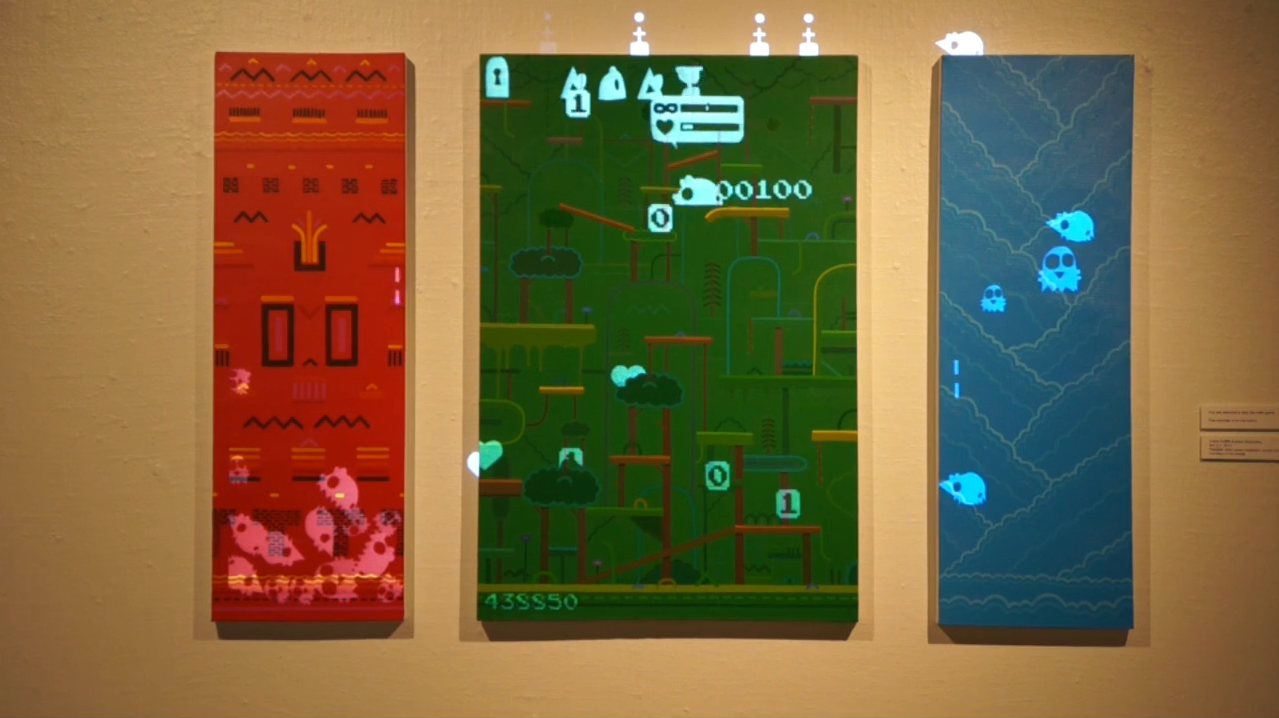There’s a distinctly modern aesthetic preoccupation with abandoning strict narrative in favor of immersive sensory experience. Think of the films of Harmony Korine, or the drop-heavy electronic dance music that’s currently en vogue, which shuns the long, slow builds of previous genres and embraces isolated tableaux of overwhelming sound (there’s a reason Skrillex showed up so often in Spring Breakers). Life is mostly experienced as a series of moments and associated feelings, not a straight line from A to B; why shouldn’t our art feel the same way?
That’s one of the questions posed by Brent Watanabe’s for(){};, a confusing, unwinnable video game that’s projection mapped onto a triptych of paintings. Watanabe explains:
In for( ){ };, there is no beginning or end to the game, just collecting and wandering, birthing and consuming, an arbitrary point system rising until your inevitable death and the birth of another generation. It is a game mechanism without the game. An addictive but essentially aimless experience.
It is a tale told by 8 bits, full of sound and fury, signifying nothing, if you dig what we’re saying here. Out, out, brief Nintendo!
The painting is a little more vexing. The artist claims it is influenced by that most famous of triptychs, Bosch’s Garden of Earthly Delights (I liked it better on a skateboard), and that it merges “traditional materials and ‘new’ technology.” It’s definitely pretty, and the projection mapping is impressive–if your (projected) character lands on a platform on the (IRL) painting, he’ll stay there, as if it’s a part of the game–but I’m not sure how it contributes to what the rest of the piece has to say.
Maybe the canvas can be thought of as a frame. Like David Tudor opening the lid of the piano, it announces that what we’re about to experience is art, and should be thought of as such. Or maybe it’s about how the ever-blurring line between IRL and URL worlds.
Either way, I’d still like to fuck around with a playable browser version. For now I’ll settle for the video above.


